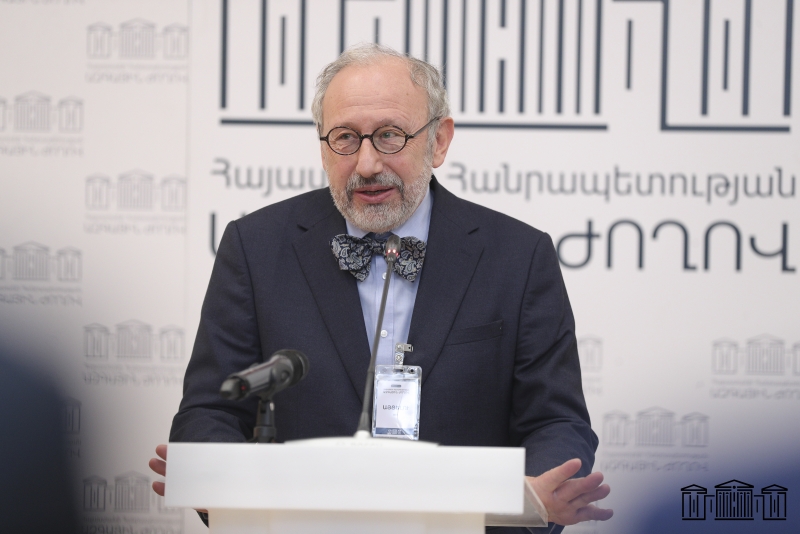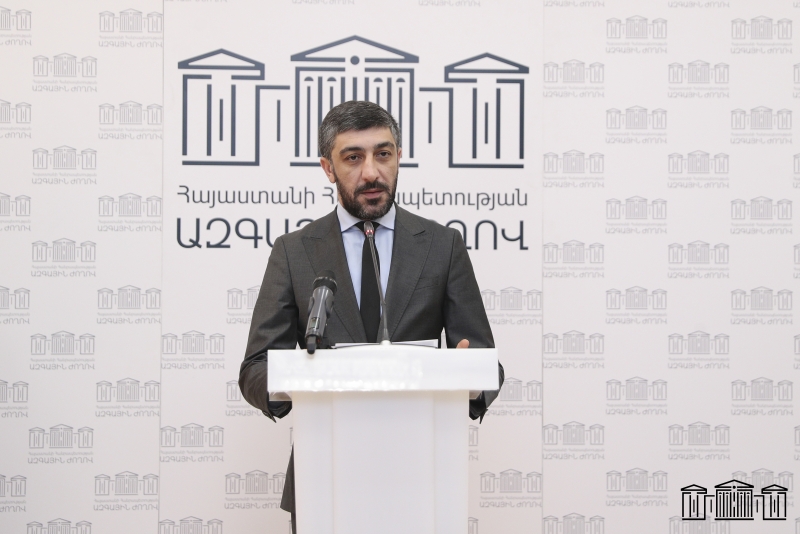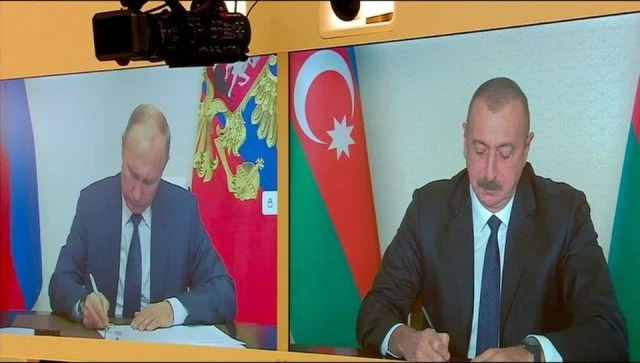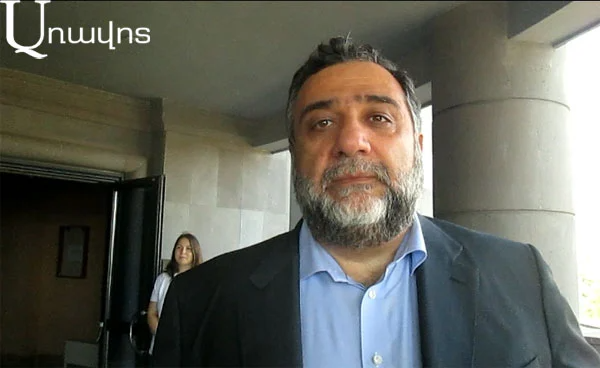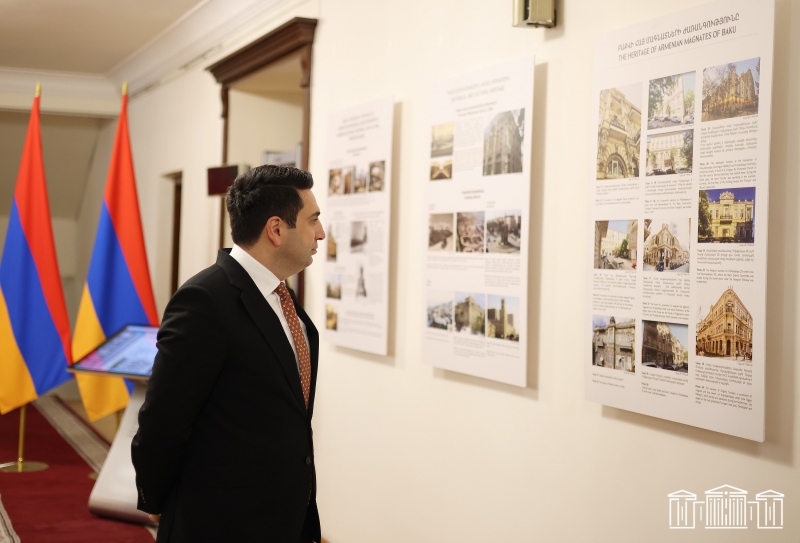Exhibition titled The Armenian Historical-Cultural Trace in Baku opened in Parliament
The Armenians’ forced migration from Azerbaijan began from February 27, 1988 with massacres of Sumgait, continued in Baku, then – in other cities of Azerbaijan. At that time, not having proper assessment of the international community, the ethnophobic and aggressive policy pursued by the authorities of Azerbaijan against Armenians had continued until now: the deputy of the NA Civil Contract Faction during the opening of the exhibition titled The Armenian Historical-Cultural Trace in Baku.
“Recently forced migration of more than 100.000 our compatriots from Nagorno Karabakh took place. The number of the Armenians born in Azerbaijan and moved to the Republic of Armenia exceeds 500.000 at this moment, and in general, the number of the Armenians emigrated from Azerbaijan is more than 800.000,” the deputy added. He noted that he speaks up not only as an RA NA deputy and a man who was born in Baku, forcibly displaced under the life threatening, but also as a Founder and President of the newly created NGO Gardman-Shirvan-Nakhijevan Union.
Read also
Vilen Gabrielyan informed that as an evidence of historical-cultural heritage are presented the Armenian churches, invaluable works of oil producers, architects and builders.
“The Armenian and the Azerbaijanis lived side by side, when they had peace. The buildings in the pictures of the exhibition are evidence and are call for peace, taking steps for living side by side,” the RA NA President Alen Simonyan noted.
The Director of Alexander Tamanyan National Museum-Institute of Architecture Mark Grigoryan also considered important the fact that the architects and cultural figures had their contribution in Baku.
“When we speak about the Armenian architects’ contribution in the development of the city of Baku, We’d like to say that the city was richer, when the Armenians were there, and they were creating. Yes, the Armenians were enriching Baku. We should accept that fact, though I understand that from the political viewpoint accepting that is very difficult for Baku,” Mark Grigoryan mentioned.
The Deputy Director of Alexander Tamanyan National Museum-Institute of Architecture Anushik Ter-Minasyan presented in detail to the guests the historical-cultural monuments depicted in the pictures.
The Ambassadors Plenipotentiary and Extraordinary of Romania, Czech Republic, Syria and Poland, the Chargé D’Affaires of Iraq, Spain, Ukraine, Argentina to the Republic of Armenia, the Authorized Ministers of the Embassies of Bulgaria and Kuwait, the representatives of the Staffs of the Embassies of Serbia, the Russian Federation, China, Slovakia and the RA NA deputies also attended the exhibition
The exhibition titled The Armenian Historical-Cultural Trace in Baku will function until December 20.
National Assembly of the Republic of Armenia




















































